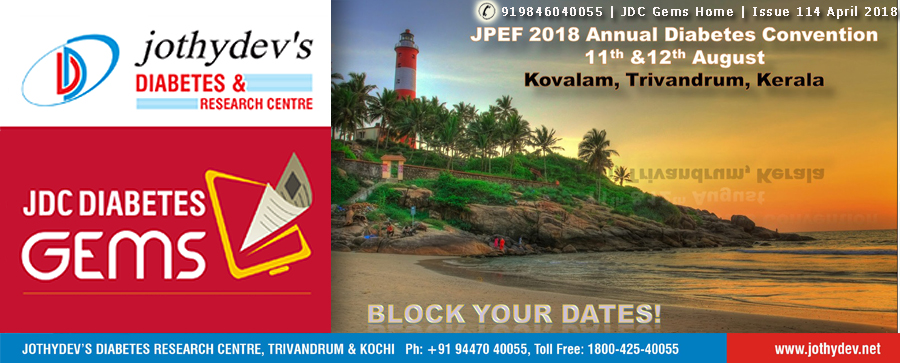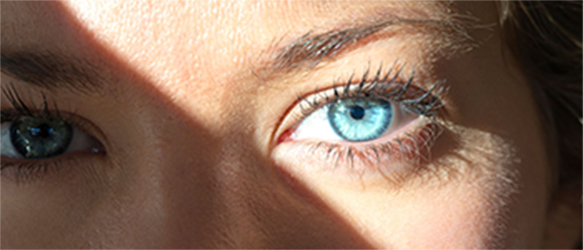
2. Low Vitamin D levels & Severity of |

![]() Low level of serum 25-hydroxyvitamin D (25(OH)D) seems to be associated with increased severity of diabetic retinopathy (DR) in Asian Indians with type 2 diabetes mellitus (T2DM). The study which was published in the journal Diabetes Research and Clinical Practice, also shows that vitamin D deficiency (VDD) is associated with a 2-fold increased risk for proliferative DR (PDR).
Low level of serum 25-hydroxyvitamin D (25(OH)D) seems to be associated with increased severity of diabetic retinopathy (DR) in Asian Indians with type 2 diabetes mellitus (T2DM). The study which was published in the journal Diabetes Research and Clinical Practice, also shows that vitamin D deficiency (VDD) is associated with a 2-fold increased risk for proliferative DR (PDR).
![]() Diabetic retinopathy (DR) is a major complication associated with diabetes and is one of the leading causes of blindness. Many previous investigations have shown an association between VDD and DR in various populations, but this association has not been studied in Indians.
Diabetic retinopathy (DR) is a major complication associated with diabetes and is one of the leading causes of blindness. Many previous investigations have shown an association between VDD and DR in various populations, but this association has not been studied in Indians.
![]() Dr. Ashinne B from Duke University School of Medicine, United States, and her team, conducted a retrospective study among T2DM individuals who received care at a tertiary diabetes centre in India, between 2012 and 2015. The study assessed 3054 T2DM patients (age>18 years) who underwent detailed retinal examination with DR severity grading. DR grades were classified as no DR, mild nonproliferative DR (NPDR), moderate NPDR, severe NPDR, or PDR. Serum (25(OH)D) levels between patients with DR and those without DR were compared.
Dr. Ashinne B from Duke University School of Medicine, United States, and her team, conducted a retrospective study among T2DM individuals who received care at a tertiary diabetes centre in India, between 2012 and 2015. The study assessed 3054 T2DM patients (age>18 years) who underwent detailed retinal examination with DR severity grading. DR grades were classified as no DR, mild nonproliferative DR (NPDR), moderate NPDR, severe NPDR, or PDR. Serum (25(OH)D) levels between patients with DR and those without DR were compared.
![]() Overall, 69.4% of patients had 25(OH)D levels <20 ng/mL. Serum 25(OH)D levels were lower in patients with DR compared to those without (11.9±2.2 ng/mL vs 13.7±2.1 ng/mL; P<0.001). Stratifying patients by DR grade, reduced geometric means of 25(OH)D levels were associated with increased retinopathy severity. In addition, VDD was associated with two-fold increased risk for PDR (OR, 2.05; 95% CI, 1.35-3.11; P=0.001).
Overall, 69.4% of patients had 25(OH)D levels <20 ng/mL. Serum 25(OH)D levels were lower in patients with DR compared to those without (11.9±2.2 ng/mL vs 13.7±2.1 ng/mL; P<0.001). Stratifying patients by DR grade, reduced geometric means of 25(OH)D levels were associated with increased retinopathy severity. In addition, VDD was associated with two-fold increased risk for PDR (OR, 2.05; 95% CI, 1.35-3.11; P=0.001).
![]() “Our finding contributes supporting evidence to a protective role of vitamin D on the development of DR, particularly at the most advance end of spectrum,’’ the authors wrote. They have also called for further studies to examine the role of vitamin D supplementation in the treatment of DR.
“Our finding contributes supporting evidence to a protective role of vitamin D on the development of DR, particularly at the most advance end of spectrum,’’ the authors wrote. They have also called for further studies to examine the role of vitamin D supplementation in the treatment of DR.
![]()
For enquiries info@jothydev.net.
Please visit: jothydev.net | research.jothydev.com | diabscreenkerala.net | jothydev.com/newsletter
